Freshwater Green Energy Solutions – an Untapped Potential
In a world increasingly focused on sustainable energy, the potential of freshwater green energy solutions stands out as a beacon of hope. We often think of solar panels and wind turbines when discussing renewable energy, but what if I told you that the vast bodies of freshwater around us hold incredible, yet largely untapped, opportunities for generating clean energy? From rivers to lakes, these resources can be harnessed to create sustainable energy solutions that not only power our homes but also help preserve our environment. Imagine a future where our energy needs are met without harming the planet. This article dives deep into the innovative technologies that harness freshwater energy, explores their benefits, and addresses the challenges they face in becoming mainstream solutions. Are you ready to discover how we can turn our abundant freshwater resources into a powerhouse for sustainable energy?
Freshwater energy encompasses a variety of technologies that utilize our water resources for power generation. This includes traditional methods like hydropower and innovative approaches such as wave and tidal energy. Each of these solutions plays a crucial role in reducing our reliance on fossil fuels and minimizing our carbon footprint. The environmental significance of these technologies cannot be overstated; they offer a pathway to cleaner energy while preserving the delicate balance of our ecosystems. By understanding the different types of freshwater energy solutions, we can appreciate their potential to contribute to a sustainable future.
Hydropower has long been a dominant source of renewable energy, providing a significant portion of the world’s electricity. It operates on a simple principle: water flow is harnessed to turn turbines, which generate power. But, like any technology, it comes with its own set of advantages and disadvantages. On one hand, hydropower is highly efficient and can produce large amounts of energy. On the other hand, traditional hydropower systems, such as large dams, can lead to significant ecological impacts, including habitat destruction and changes in water quality. It's essential to balance the need for energy with the health of our ecosystems.
One alternative to traditional hydropower is the use of run-of-river systems. These systems generate electricity without the need for large reservoirs, making them a less invasive option. Instead of storing water, they utilize the natural flow of the river to produce energy. This approach not only minimizes disruption to local ecosystems but also maintains the river's natural flow, which is crucial for aquatic habitats. The operational mechanisms of run-of-river systems are fascinating; they often involve diverting a portion of the river's flow through a turbine, generating electricity while allowing the remainder of the water to continue downstream.
The environmental benefits of run-of-river systems are significant. By avoiding the construction of large dams, these systems help preserve local ecosystems, ensuring that fish and other wildlife can thrive. Additionally, they maintain the natural sediment flow, which is vital for the health of riverbanks and aquatic habitats. This preservation of ecological balance is crucial in our fight against climate change and biodiversity loss.
However, run-of-river systems are not without their challenges. Seasonal flow variability can impact their efficiency and reliability, making it difficult to produce a consistent energy supply. This variability can be influenced by factors such as rainfall patterns and climate change, which may lead to fluctuating water levels. Addressing these limitations is essential for maximizing the potential of run-of-river systems as a reliable energy source.
Pumped storage hydropower is another innovative solution that plays a crucial role in energy storage and grid stability. This technology works by pumping water to a higher elevation during periods of low energy demand and releasing it to generate electricity during peak demand. This method not only helps balance energy supply and demand but also enhances the overall efficiency of the energy grid. In a world that increasingly relies on renewable energy sources, pumped storage is becoming an essential component of our energy infrastructure.
As we look towards the future, innovative technologies are rapidly evolving in the freshwater energy sector. These advancements promise to redefine how we generate energy from our water resources. For instance, wave energy conversion harnesses the power of ocean waves, while tidal energy solutions capitalize on the predictable movements of tidal waters. Both technologies have the potential to be integrated with freshwater systems, creating a more diverse and resilient energy portfolio.
Wave energy conversion is an exciting field that captures the energy produced by ocean waves. This technology can be particularly beneficial in coastal freshwater environments, where the energy from waves can be harnessed to supplement traditional energy sources. The potential for wave energy is immense, and as technology advances, we may see more projects that combine wave energy with freshwater systems.
Tidal energy offers a predictable energy source, making it an attractive option for energy generation. By harnessing the movements of tides in freshwater environments, we can create a reliable energy supply that complements other renewable sources. The benefits of tidal energy extend beyond just power generation; it can also contribute to local economies and job creation in the renewable energy sector.
While freshwater energy solutions present numerous benefits, they also pose environmental challenges. It is essential to examine the sustainability of these technologies and their ecological footprints. The implementation of freshwater energy systems can impact local aquatic ecosystems, potentially disrupting habitats and altering water quality. However, with careful planning and mitigation strategies, we can protect biodiversity while harnessing the power of freshwater.
Understanding the potential risks to aquatic ecosystems is crucial in the development of freshwater energy projects. The construction and operation of these systems can lead to habitat loss, changes in water flow, and impacts on fish populations. To address these challenges, it is vital to implement effective mitigation strategies that protect biodiversity and ensure the sustainability of our freshwater resources.
Interestingly, freshwater energy solutions can enhance resilience against climate change. By diversifying our energy sources and reducing our reliance on fossil fuels, these technologies contribute to adaptive strategies in energy production and resource management. As we face the challenges of a changing climate, embracing freshwater energy solutions can be a powerful tool in our arsenal for sustainability.
Effective policies are essential for the growth of freshwater energy solutions. Current regulations often lag behind technological advancements, creating barriers to investment and innovation. A supportive regulatory framework is needed to encourage the development of freshwater energy projects and ensure their successful implementation.
Government incentives play a pivotal role in promoting freshwater energy projects. Financial support, tax credits, and streamlined permitting processes can significantly lower the barriers to entry for new technologies. By fostering a favorable environment for investment, we can accelerate the adoption of freshwater energy solutions.
International collaboration is crucial for advancing freshwater energy technologies. Successful partnerships and initiatives can drive innovation and knowledge sharing, allowing countries to learn from one another's successes and challenges. By working together, we can create a more sustainable energy future that benefits everyone.
The future of freshwater energy solutions is promising, with ongoing research and development paving the way for new innovations. As we continue to explore the potential of these technologies, we can expect to see exciting trends that could reshape the energy landscape. One such trend is the integration of freshwater energy systems with smart grids, enhancing efficiency and reliability.
Integrating freshwater energy systems with smart grids is a game-changer. This technological advancement allows for better management of energy resources, ensuring that supply meets demand in real-time. By leveraging data and automation, we can create a more resilient and efficient energy infrastructure that supports the growth of renewable energy.
Finally, raising public awareness about freshwater energy is vital for its adoption. Education plays a crucial role in fostering community support and understanding of these technologies. By informing the public about the benefits and potential of freshwater energy solutions, we can drive demand and encourage investment in this untapped resource.
- What is freshwater energy? Freshwater energy refers to various technologies that utilize water resources, such as rivers and lakes, for power generation.
- How does hydropower work? Hydropower generates electricity by harnessing the flow of water to turn turbines.
- What are run-of-river systems? Run-of-river systems generate energy without large reservoirs, using the natural flow of rivers.
- What are the environmental impacts of freshwater energy? While they offer benefits, freshwater energy systems can impact local ecosystems, requiring careful planning and mitigation strategies.
- How can government policies support freshwater energy? Effective policies, including financial incentives and streamlined regulations, are crucial for promoting freshwater energy projects.
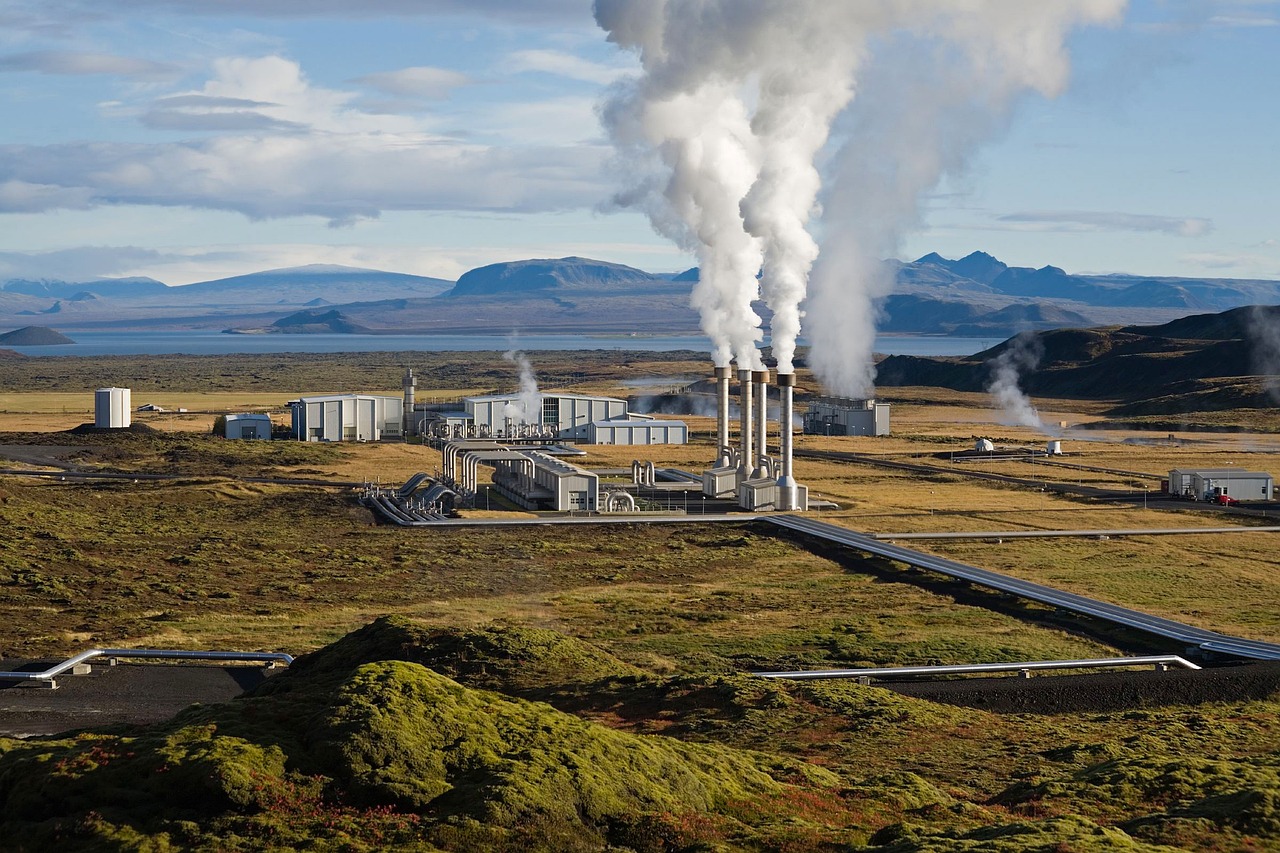
Understanding Freshwater Energy
Freshwater energy is an exciting and often overlooked frontier in the renewable energy landscape. It encompasses a variety of technologies designed to harness the power of water resources, primarily focusing on lakes, rivers, and other freshwater bodies. Imagine tapping into the natural flow of rivers or the gentle waves of a lake to generate electricity—this is the essence of freshwater energy. The potential benefits of these technologies are immense, not just for energy production but also for environmental sustainability.
At its core, freshwater energy can be categorized into several key technologies, each with its own unique mechanisms and applications. These include:
- Hydropower: The most traditional form of freshwater energy, utilizing the kinetic energy of flowing water to generate electricity.
- Run-of-River Systems: A less invasive alternative to large dams, these systems generate power without significantly altering river flow.
- Pumped Storage Hydropower: This method stores energy by moving water between two reservoirs at different elevations, providing a reliable energy source during peak demand.
- Wave and Tidal Energy: While primarily associated with ocean energy, these technologies can also be adapted for freshwater systems, harnessing the power of waves and tidal movements.
One of the most compelling aspects of freshwater energy is its potential to contribute to sustainable energy practices. As the world grapples with the impacts of climate change and the need for cleaner energy sources, freshwater energy solutions emerge as viable alternatives. They not only reduce reliance on fossil fuels but also offer a way to preserve local ecosystems by minimizing environmental disruption.
However, while the promise of freshwater energy is significant, it is essential to understand the environmental significance of these technologies. The careful management of freshwater resources is critical to maintaining biodiversity and ensuring that energy generation does not come at the expense of local ecosystems. This balance is vital, as the health of our freshwater bodies directly impacts the flora and fauna that depend on them.
In summary, understanding freshwater energy means recognizing its vast potential to reshape our energy landscape while simultaneously preserving the environment. By investing in innovative technologies and sustainable practices, we can unlock the full potential of our freshwater resources, paving the way for a cleaner, greener future.
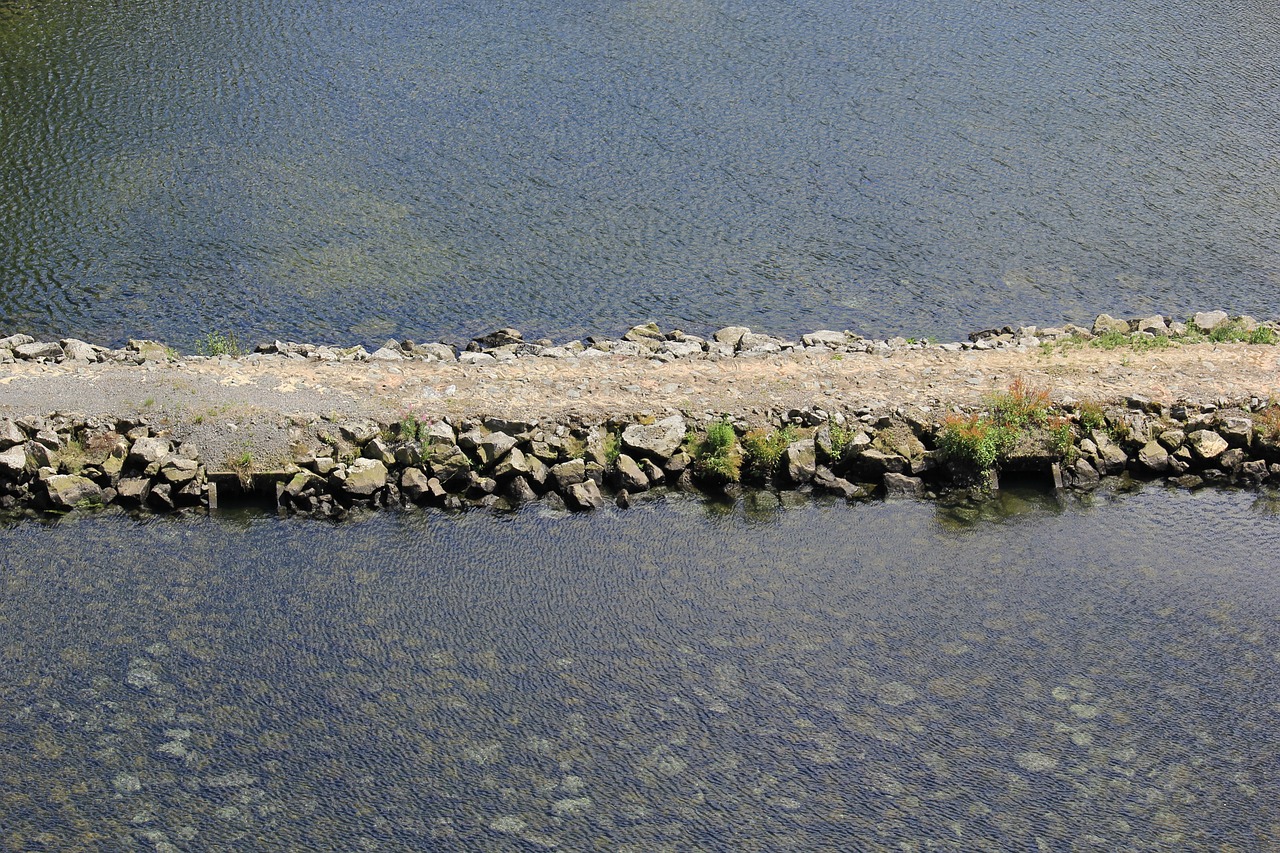
Hydropower: A Traditional Approach
Hydropower has long been hailed as a cornerstone of renewable energy, providing a significant portion of the world's electricity. This traditional approach harnesses the kinetic energy of flowing water, converting it into power through various technologies. From massive dams to small-scale installations, hydropower remains a reliable energy source, often touted for its efficiency and low operational costs. But what makes hydropower so appealing, and what are the environmental implications of such systems? Let's dive deeper into the mechanics and impacts of hydropower.
The efficiency of hydropower is primarily due to its ability to convert a high percentage of the energy stored in water into electricity. In fact, modern hydropower plants can achieve efficiencies of up to 90%, making them one of the most efficient energy sources available. This efficiency translates into lower operational costs and a reduced carbon footprint compared to fossil fuels. However, the ecological impacts associated with traditional hydropower systems cannot be overlooked. Large dams can disrupt local ecosystems, displace communities, and significantly alter water flow patterns, leading to unintended consequences for both wildlife and human populations.
One alternative to traditional dam-based hydropower is the run-of-river system. These systems generate electricity by utilizing the natural flow of rivers without the need for large reservoirs. By maintaining the river's natural flow, run-of-river systems minimize ecological disruption while still providing a renewable energy source. This approach allows for a more sustainable interaction with our water resources, preserving the delicate balance of aquatic ecosystems.
Run-of-river systems offer several environmental benefits that traditional hydropower plants often lack. By keeping the river's flow intact, these systems help to preserve local ecosystems, ensuring that aquatic habitats remain stable. Additionally, they reduce the risk of large-scale flooding and sedimentation issues often associated with massive dams. The preservation of local flora and fauna is crucial, especially in areas where biodiversity is already under threat.
Despite their advantages, run-of-river systems are not without challenges. Seasonal flow variability can significantly impact their efficiency and reliability. For instance, during dry seasons, the reduced water levels may hinder energy production, making it difficult to meet demand. Moreover, the initial investment and technological requirements can pose barriers to widespread adoption. To overcome these challenges, ongoing research and development are essential to enhance the reliability of run-of-river systems.
Pumped storage hydropower is another traditional approach that plays a vital role in energy storage and grid stability. This system works by pumping water to a higher elevation during periods of low energy demand and releasing it to generate electricity during peak demand times. This method not only helps balance the energy supply but also provides a way to store excess energy generated from other renewable sources, such as wind and solar. As we transition to a more sustainable energy future, the role of pumped storage hydropower cannot be underestimated.
- What are the main advantages of hydropower? Hydropower is efficient, provides a consistent energy source, and has a low carbon footprint compared to fossil fuels.
- What are the environmental impacts of traditional hydropower? Traditional hydropower can disrupt local ecosystems, displace communities, and alter water flow patterns.
- How do run-of-river systems differ from traditional dams? Run-of-river systems utilize the natural flow of rivers without creating large reservoirs, minimizing ecological disruption.
- What is pumped storage hydropower? Pumped storage hydropower is a method of storing energy by pumping water to a higher elevation during low demand and releasing it during peak demand.
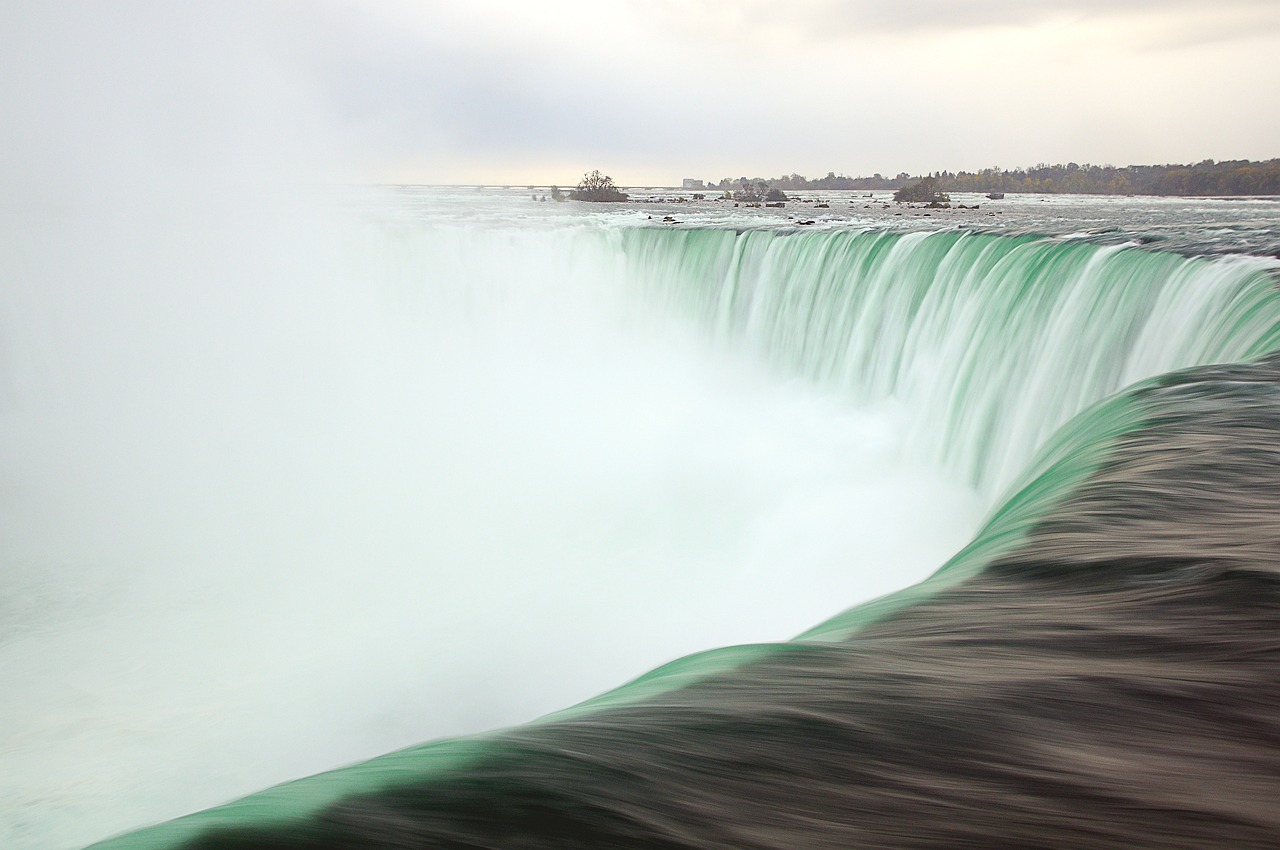
Run-of-River Systems
Run-of-river systems represent a significant shift in the way we harness energy from our waterways. Unlike traditional hydropower systems that often require large dams and extensive infrastructure, run-of-river systems utilize the natural flow of rivers to generate electricity. This approach not only minimizes the ecological footprint but also supports the preservation of local ecosystems. Imagine a gentle stream flowing through a forest; instead of building a massive dam that alters its course, a run-of-river system captures the energy of that flowing water without drastically changing its path.
One of the key features of run-of-river systems is their operational mechanism, which typically involves diverting a portion of the river's flow through a turbine. This setup allows for the generation of electricity while maintaining most of the river's natural flow. The beauty of this technology lies in its ability to coexist with the environment, providing energy without the extensive alteration of landscapes that is common with conventional hydropower projects.
However, it’s essential to understand the environmental advantages that run-of-river systems offer. These systems help to preserve local ecosystems by ensuring that the river's flow remains largely unchanged. This preservation is critical for maintaining aquatic habitats and supporting the flora and fauna that rely on these ecosystems. For instance, fish populations can thrive without the barriers created by large dams, leading to healthier and more diverse aquatic life.
Despite these benefits, run-of-river systems are not without their challenges. One of the primary limitations is the seasonal variability of river flows, which can impact the amount of energy generated. During dry seasons, the reduced water flow may lead to lower electricity production, making it less reliable compared to other energy sources. Additionally, the placement of these systems must be carefully considered to avoid disrupting local wildlife and habitats.
In summary, run-of-river systems offer a promising alternative to traditional hydropower. They harness the power of flowing water while minimizing ecological disruption, making them an attractive option for sustainable energy generation. As we continue to seek innovative solutions to our energy needs, understanding and improving these systems will be crucial in our efforts to create a greener future.
- What are run-of-river systems? Run-of-river systems are hydropower systems that generate electricity by utilizing the natural flow of a river without significant alteration of its course.
- How do run-of-river systems benefit the environment? They help preserve local ecosystems by maintaining river flow and supporting aquatic habitats, unlike traditional dams that can disrupt these environments.
- What are the challenges faced by run-of-river systems? Seasonal flow variability can affect energy production, and careful placement is required to avoid disrupting wildlife.
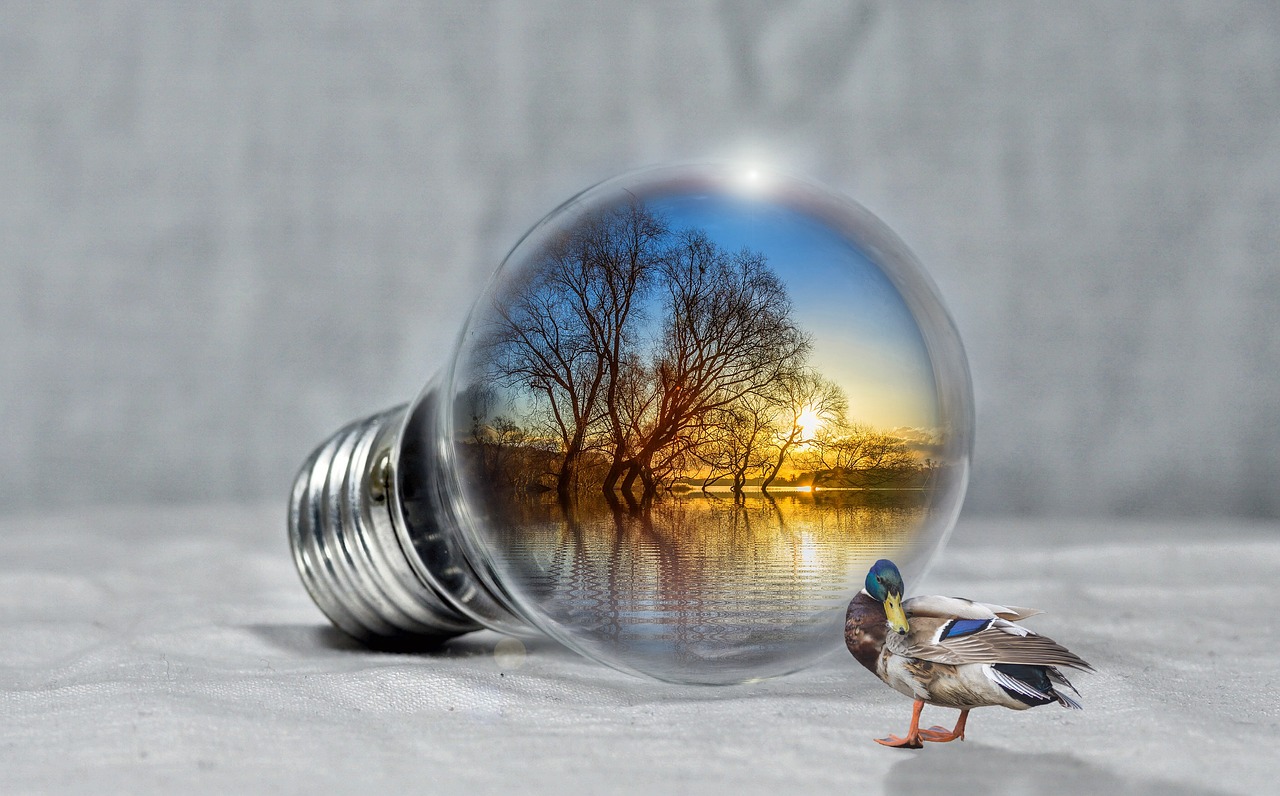
Environmental Benefits
The environmental benefits of run-of-river hydropower systems are significant, making them a compelling option in the quest for sustainable energy solutions. Unlike traditional dam-based hydropower, which can dramatically alter river ecosystems, run-of-river systems work with the natural flow of water, resulting in minimal ecological disruption. This approach not only preserves the integrity of aquatic habitats but also supports the health of local ecosystems.
One of the most notable advantages of these systems is their ability to maintain the natural flow of rivers. By utilizing the kinetic energy of flowing water without impeding its course, run-of-river systems help to sustain vital habitats for fish and other aquatic organisms. This is crucial for species that rely on specific flow conditions for spawning and feeding. The preservation of these habitats contributes to the overall biodiversity of the region, which is essential for ecological balance.
Moreover, run-of-river systems can provide a more consistent energy output compared to traditional methods, which often face fluctuations due to seasonal changes. This consistency is beneficial not only for energy production but also for the surrounding environment. By reducing the need for large reservoirs, these systems can help mitigate the risks of water quality degradation and sedimentation that often accompany traditional hydropower projects.
In addition to these ecological advantages, run-of-river systems can also play a role in climate change mitigation. By harnessing renewable energy sources, they contribute to reducing greenhouse gas emissions. This shift away from fossil fuels is essential in combating climate change and ensuring a sustainable future. Furthermore, the integration of run-of-river systems into local energy grids can enhance community resilience against climate-related disruptions, providing a stable energy supply even in adverse conditions.
To summarize, the environmental benefits of run-of-river hydropower systems include:
- Minimal ecological disruption: Preserves local ecosystems and aquatic habitats.
- Consistent energy output: Reduces fluctuations in energy production.
- Climate change mitigation: Contributes to lower greenhouse gas emissions.
- Community resilience: Enhances stability in energy supply during climate-related events.
As we move forward in our pursuit of sustainable energy solutions, understanding and leveraging the environmental benefits of run-of-river systems will be crucial. By prioritizing these innovative technologies, we can foster a healthier planet while meeting our energy needs.
1. What are run-of-river hydropower systems?
Run-of-river hydropower systems generate electricity by harnessing the natural flow of rivers without the need for large reservoirs. This approach minimizes environmental impact while providing a renewable energy source.
2. How do run-of-river systems benefit local ecosystems?
These systems help maintain the natural flow of rivers, which is essential for the health of aquatic habitats. They support biodiversity by allowing fish and other organisms to thrive without significant disruption.
3. Can run-of-river hydropower help combat climate change?
Yes! By utilizing renewable energy sources, run-of-river systems contribute to reducing greenhouse gas emissions, which is vital in the fight against climate change.
4. Are there any downsides to run-of-river hydropower?
While run-of-river systems have many benefits, they can face challenges such as seasonal flow variability, which may affect their energy output. However, ongoing advancements in technology are addressing these limitations.
5. How can communities support the implementation of run-of-river systems?
Community awareness and engagement are crucial. Supporting local initiatives, advocating for policies that promote renewable energy, and participating in educational programs can all help foster the adoption of run-of-river hydropower solutions.
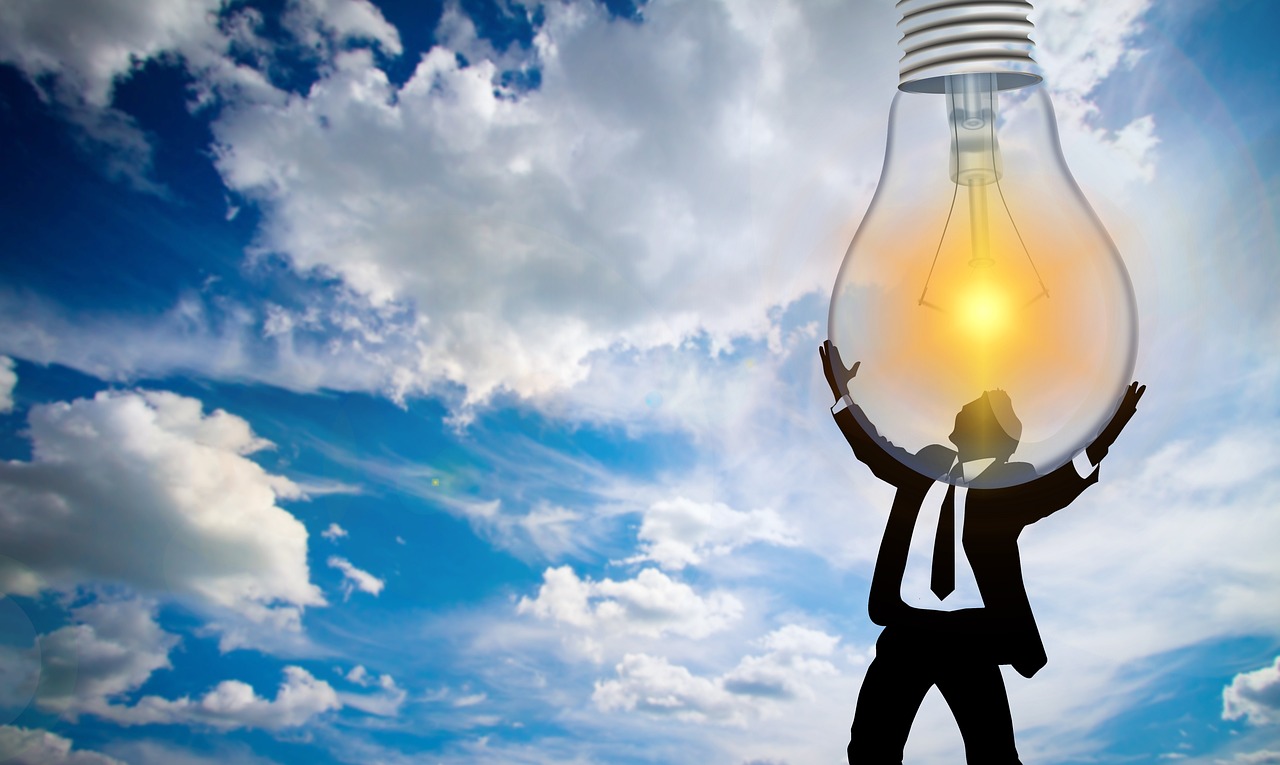
Challenges and Limitations
While run-of-river hydropower systems present a more environmentally friendly alternative to traditional dam-based hydropower, they are not without their . One of the primary hurdles is the seasonal variability of river flow. Unlike conventional hydropower systems that can store water in reservoirs, run-of-river systems rely on the natural flow of the river, which can fluctuate significantly throughout the year. This variability can lead to periods of low energy generation during dry seasons, making it difficult to maintain a consistent energy supply.
Moreover, the site-specific nature of these systems can also pose a challenge. Not every river is suitable for run-of-river energy generation, as factors such as flow rate, riverbed conditions, and surrounding ecosystems must be carefully assessed. This means that potential sites for new installations can be limited, leading to geographical constraints on the expansion of this technology.
Another significant concern is the impact on local communities. While run-of-river systems are generally less invasive than traditional dams, they can still affect the livelihoods of people who depend on the river for fishing, recreation, and other activities. This necessitates thorough community engagement and impact assessments before any project can move forward. As developers and stakeholders strive to balance energy needs with community interests, the process can become complex and contentious.
Furthermore, the initial investment costs for run-of-river projects can be substantial, particularly when considering the need for advanced technology and infrastructure. Although these systems can lead to long-term savings and environmental benefits, the upfront financial burden can deter potential investors. To mitigate this, it is crucial to establish incentives and support mechanisms that can help offset these costs and encourage investment in renewable energy solutions.
In summary, while run-of-river hydropower systems offer a promising avenue for renewable energy generation, they are accompanied by various challenges and limitations. Addressing these issues requires a concerted effort from stakeholders, policymakers, and communities to ensure that the benefits can be realized without compromising environmental integrity or social equity.
- What are run-of-river hydropower systems?
Run-of-river hydropower systems generate electricity by harnessing the natural flow of rivers without the need for large reservoirs. - How do seasonal variations affect energy generation?
Seasonal variations in river flow can lead to inconsistent energy production, particularly during dry periods when water levels are low. - What are the environmental impacts of these systems?
While they are less invasive than traditional dams, run-of-river systems can still affect local ecosystems and community livelihoods. - Are there financial incentives for investing in run-of-river projects?
Yes, various government incentives and support mechanisms can help offset the initial investment costs associated with these projects.

Pumped Storage Hydropower
Pumped storage hydropower (PSH) is a fascinating and crucial technology in the realm of renewable energy. It acts like a giant battery, storing energy that can be released when needed. Imagine a water reservoir situated high up on a hill. During periods of low energy demand, excess electricity generated from renewable sources, such as wind or solar, is used to pump water from a lower reservoir to this higher elevation. When energy demand peaks, the stored water is released back down through turbines, generating electricity. This dual operation not only enhances energy storage but also stabilizes the grid, making it a key player in balancing supply and demand.
One of the most compelling aspects of pumped storage hydropower is its efficiency. Typically, PSH systems can achieve energy conversion efficiencies of over 70%, meaning that a significant portion of the energy used to pump the water can be recovered when generating electricity. This efficiency is vital in a world increasingly dependent on intermittent renewable energy sources. With fluctuations in energy generation, having a reliable storage solution like pumped storage can mitigate the risks associated with these variations.
However, while PSH offers numerous benefits, it is not without its challenges. The construction of pumped storage facilities can be capital-intensive and requires careful site selection to minimize ecological disruption. Additionally, the geographical limitations mean that not every location is suitable for this technology. For instance, the ideal sites need to have a significant elevation difference between the two reservoirs, which can limit the options available. Nevertheless, the potential for pumped storage hydropower is enormous, and ongoing innovations are improving its feasibility and efficiency.
To give you a clearer picture, here’s a quick comparison of pumped storage hydropower against other energy storage methods:
| Energy Storage Method | Efficiency | Cost | Environmental Impact |
|---|---|---|---|
| Pumped Storage Hydropower | 70-90% | High (initial investment) | Moderate (site-dependent) |
| Battery Storage | 80-90% | High (lifecycle costs) | High (resource extraction) |
| Flywheel Energy Storage | 85-90% | Moderate (initial investment) | Low (minimal land use) |
As we look towards the future, pumped storage hydropower is poised to play an even more significant role in our energy landscape. With advancements in technology and increasing investments in renewable energy, the integration of PSH into our energy systems could provide the stability and reliability we need to transition to a more sustainable future.
- What is pumped storage hydropower?
Pumped storage hydropower is a method of storing energy by moving water between two reservoirs at different elevations to generate electricity when needed. - How efficient is pumped storage hydropower?
Typically, pumped storage systems can achieve energy conversion efficiencies of over 70%. - What are the environmental impacts of pumped storage?
While it can have moderate environmental impacts, these vary significantly depending on the site and design of the facility. - Is pumped storage hydropower expensive to implement?
Yes, the initial investment can be high, but it offers long-term benefits in energy reliability and efficiency.
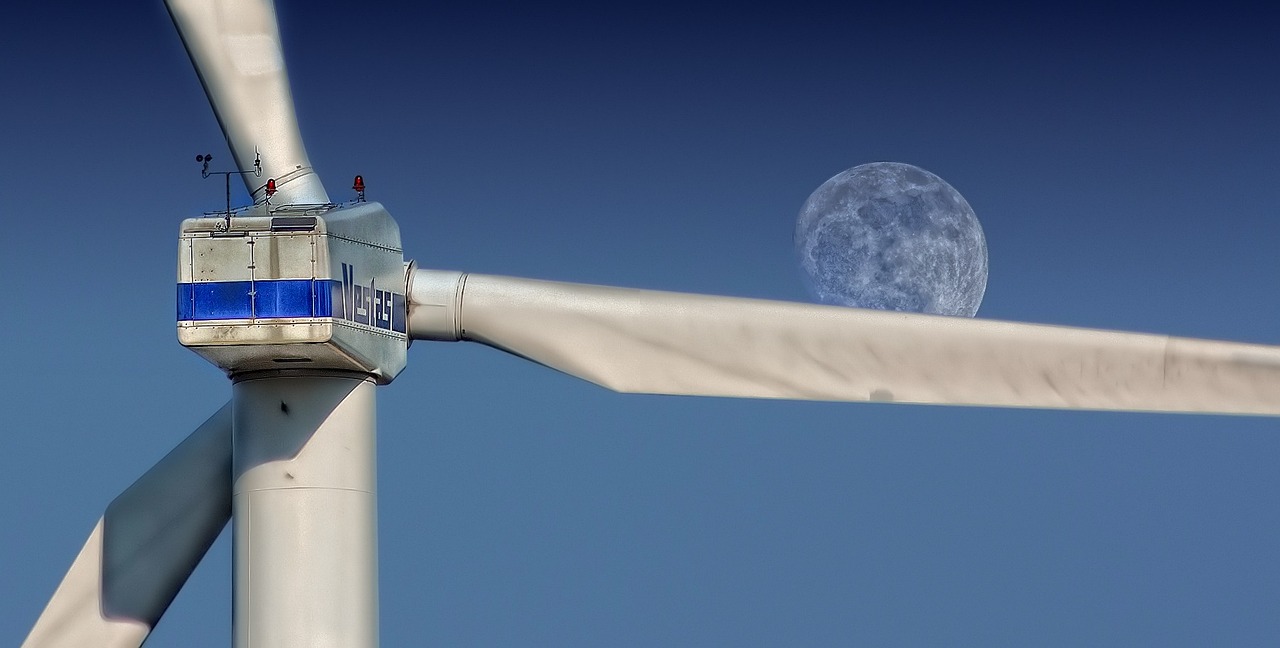
Emerging Technologies in Freshwater Energy
The landscape of freshwater energy is undergoing a significant transformation, driven by innovative technologies that promise to unlock new potential in harnessing water resources. As we look towards the future, it's essential to understand how these emerging technologies can reshape our approach to energy generation, making it more sustainable and efficient. From wave energy converters to tidal energy solutions, the advancements in this sector are not just exciting; they are vital for our transition to a greener energy future.
Wave energy conversion is one of the most promising technologies in the freshwater energy domain. This method captures the kinetic energy produced by ocean waves and converts it into electricity. Imagine the ocean's rhythmic dance, where each wave becomes a potential powerhouse of energy! The technology leverages various mechanisms, such as oscillating water columns and point absorbers, to harness this energy. What’s particularly fascinating is the potential for integrating wave energy systems with freshwater infrastructures, allowing for a more diverse energy portfolio.
On the other hand, tidal energy solutions offer a predictable and reliable energy source. Unlike solar or wind energy, which can be intermittent, tidal energy is driven by the gravitational pull of the moon and sun, making it incredibly reliable. Tidal turbines, similar to underwater wind turbines, can be positioned in tidal streams to capture this energy. The benefits are manifold: they not only provide a steady supply of electricity but also have a lower environmental impact compared to traditional energy sources. The implementation of tidal energy systems in freshwater environments can create a synergy that enhances local ecosystems while providing clean energy.
As we delve deeper into these technologies, it’s crucial to consider their scalability. Both wave and tidal energy systems can be developed on a small scale for local communities or expanded into larger projects that feed into national grids. The flexibility in deployment means that regions with abundant water resources can tap into these technologies to meet their energy needs while contributing to environmental preservation.
However, with great potential comes great responsibility. It’s essential to address the challenges associated with these technologies, such as their impact on marine life and local ecosystems. For instance, the installation of tidal turbines must be carefully planned to minimize disruption to fish migration patterns. Ongoing research and development are critical to creating solutions that balance energy production with ecological conservation.
In conclusion, the future of freshwater energy is bright, filled with innovative technologies that promise to redefine how we harness the power of water. As we embrace these advancements, we must also remain vigilant about their environmental implications. The journey towards a sustainable energy future requires collaboration between scientists, policymakers, and communities to ensure that these technologies not only meet our energy demands but also protect our precious ecosystems.
- What are the main types of freshwater energy technologies?
Freshwater energy technologies primarily include wave energy conversion and tidal energy solutions, both of which harness the power of moving water to generate electricity.
- How do wave energy converters work?
Wave energy converters capture the kinetic energy of ocean waves and convert it into electricity using various mechanisms such as oscillating water columns and point absorbers.
- What are the environmental impacts of tidal energy?
Tidal energy systems can affect local aquatic ecosystems, particularly fish migration patterns. It’s crucial to conduct thorough environmental assessments before implementation.
- Can freshwater energy solutions be integrated with existing energy grids?
Yes, both wave and tidal energy systems can be integrated with existing energy grids, enhancing the overall efficiency and reliability of the energy supply.
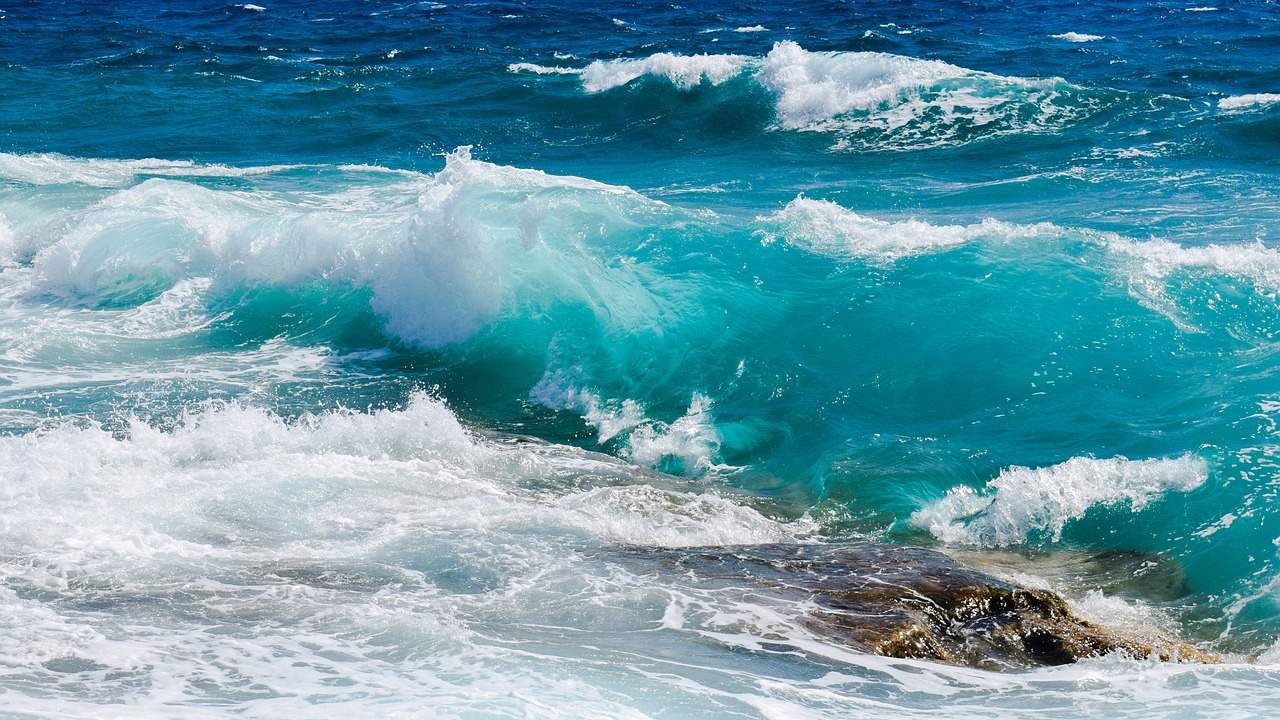
Wave Energy Conversion
Wave energy conversion is an exciting frontier in the world of renewable energy, harnessing the **unstoppable power of ocean waves** to generate electricity. Imagine the ocean's rhythmic dance, where each wave carries the potential to light up homes and power industries. This technology captures the energy produced by the movement of waves and transforms it into usable electrical energy. Unlike other forms of energy generation, wave energy is incredibly **predictable and consistent**, making it a reliable source for sustainable energy production.
The mechanics of wave energy conversion can be quite fascinating. There are several types of devices designed to capture wave energy, including point absorbers, oscillating water columns, and overtopping devices. Each of these technologies operates on different principles but shares a common goal: to **convert kinetic energy from waves** into electrical energy. For instance, point absorbers float on the surface of the water and move with the waves, using this motion to drive a generator. On the other hand, oscillating water columns utilize the rise and fall of water levels to push air through turbines, generating power in the process.
One of the **most significant advantages** of wave energy conversion is its low environmental impact compared to traditional energy sources. Unlike fossil fuels, which contribute to greenhouse gas emissions and climate change, wave energy systems produce clean electricity without harmful emissions. Furthermore, they can be integrated into existing marine structures, such as piers and breakwaters, minimizing the need for additional land use and preserving natural habitats.
However, it is crucial to acknowledge the challenges that come with wave energy technology. The marine environment can be harsh and unpredictable, which poses **engineering challenges** for the durability and reliability of wave energy devices. Additionally, the installation and maintenance of these systems can be more complex and costly than land-based renewable energy technologies. Despite these hurdles, ongoing research and development are paving the way for more efficient and cost-effective wave energy solutions.
In conclusion, wave energy conversion holds immense potential as a sustainable energy source. With the right investments and technological advancements, we can tap into the **vast energy reserves** of our oceans, contributing to a cleaner and more sustainable future. As we continue to explore and innovate in this field, wave energy could become a significant player in the global energy landscape, providing an alternative that is both **renewable and reliable**.
- What is wave energy conversion?
Wave energy conversion refers to the process of capturing the energy produced by ocean waves and converting it into electricity. - How does wave energy technology work?
Wave energy technology uses various devices to harness the kinetic energy of waves, such as point absorbers and oscillating water columns, to generate power. - Is wave energy environmentally friendly?
Yes, wave energy is considered environmentally friendly as it produces clean electricity without harmful emissions, minimizing its impact on marine ecosystems. - What are the challenges of wave energy conversion?
The challenges include harsh marine conditions that can affect device durability, higher installation and maintenance costs, and the need for technological advancements for efficiency.
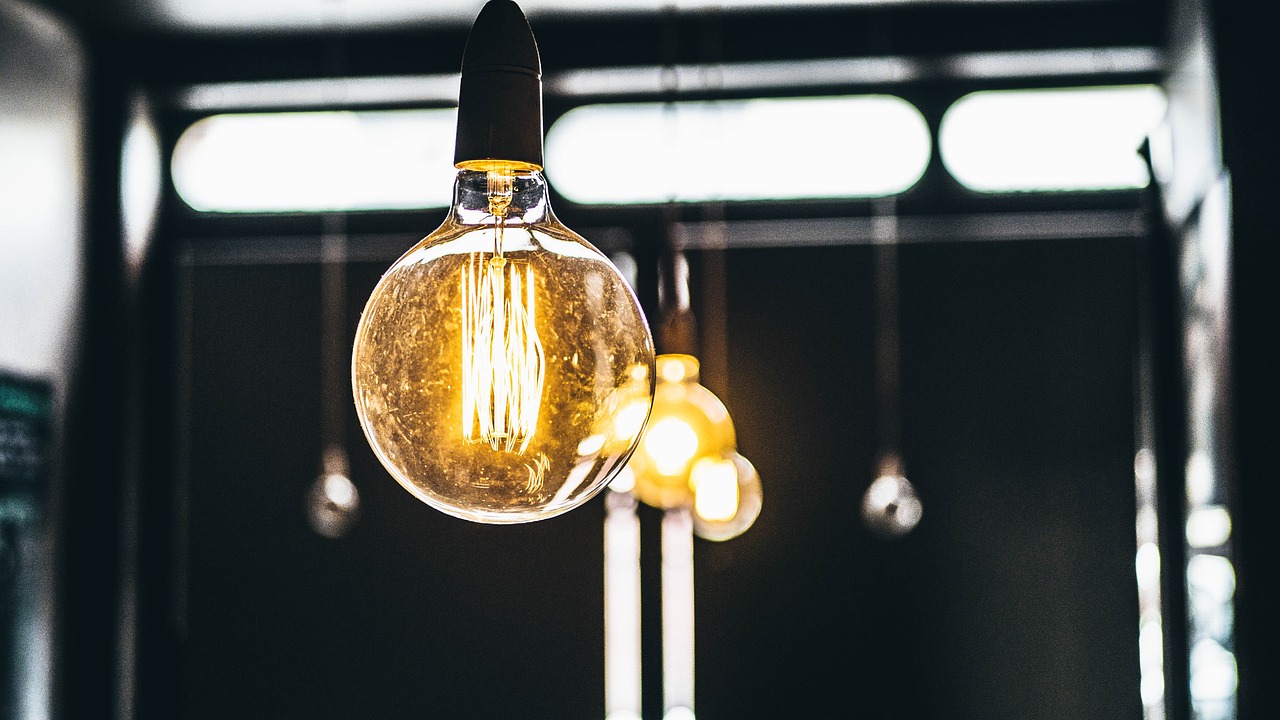
Tidal Energy Solutions
Tidal energy is an exciting and predictable form of renewable energy that harnesses the natural ebb and flow of ocean tides. Unlike other renewable sources, tidal energy is incredibly reliable, as it is influenced by the gravitational pull of the moon and sun, making it a consistent energy source. This reliability is akin to having a dependable friend who always shows up when you need them—no surprises, just steady support.
There are several methods to capture tidal energy, including tidal stream systems and tidal range systems. Tidal stream systems utilize underwater turbines that generate electricity as water flows past them, similar to how wind turbines work on land. On the other hand, tidal range systems rely on the difference in water levels between high and low tides, often employing barrages to capture this energy. Both methods offer unique advantages and challenges, but they share a common goal: to convert the kinetic and potential energy of moving water into usable electricity.
One of the most significant benefits of tidal energy is its low environmental impact. Unlike fossil fuels, which release harmful greenhouse gases and contribute to climate change, tidal energy systems produce clean energy without emitting pollutants. However, it is essential to consider the potential impacts on local ecosystems. For instance, the construction of tidal barrages can alter natural water flow, affecting fish migration patterns and local habitats. Therefore, careful planning and environmental assessments are crucial to ensure that the benefits of tidal energy do not come at the cost of ecological integrity.
In recent years, several countries have made significant strides in developing tidal energy projects. For example, the La Rance Tidal Power Station in France has been operational since 1966 and remains one of the largest tidal power plants in the world. More recently, the MeyGen Project in Scotland has showcased the potential of tidal stream technology, with plans for expansion that could generate enough electricity to power thousands of homes. These projects not only demonstrate the feasibility of tidal energy but also serve as a blueprint for future developments.
As we look ahead, the integration of tidal energy into our existing energy infrastructure presents a promising opportunity. With advancements in technology and growing awareness of the need for sustainable energy solutions, tidal energy could play a crucial role in our transition to a cleaner energy future. However, to maximize its potential, we must continue to invest in research and development, ensuring that tidal energy systems are both efficient and environmentally responsible.
- What is tidal energy? Tidal energy is a form of renewable energy that harnesses the power of ocean tides to generate electricity.
- How does tidal energy work? Tidal energy systems use either tidal stream turbines or tidal range barrages to convert the kinetic and potential energy of moving water into electricity.
- Is tidal energy environmentally friendly? Yes, tidal energy produces clean energy without harmful emissions, although careful planning is needed to mitigate impacts on local ecosystems.
- Where are the leading tidal energy projects located? Notable projects include the La Rance Tidal Power Station in France and the MeyGen Project in Scotland.

Environmental Impacts and Sustainability
Freshwater energy solutions present a fascinating opportunity to harness nature's power while promoting sustainability. However, like any technology, they come with their own set of environmental impacts that must be carefully considered. Understanding these impacts is crucial for ensuring that the benefits of freshwater energy do not come at the cost of ecological health.
One of the primary concerns surrounding freshwater energy systems is their potential effect on aquatic ecosystems. When we think about implementing these energy solutions, we must ask ourselves: how do they disrupt the delicate balance of aquatic life? The construction of dams, for instance, can alter water flow and temperature, which may harm fish populations and other wildlife that depend on specific conditions to thrive. Additionally, the introduction of infrastructure can lead to habitat fragmentation, making it difficult for species to migrate and reproduce.
To mitigate these risks, it’s essential to adopt environmentally friendly practices and technologies. For example, run-of-river systems are designed to minimize ecological disruption by maintaining the natural flow of rivers. These systems allow fish and other aquatic organisms to thrive while still generating energy. Furthermore, ongoing research into fish passage solutions, such as fish ladders and bypass systems, can help maintain biodiversity while utilizing freshwater resources.
Moreover, as climate change intensifies, the resilience of freshwater energy solutions becomes increasingly important. These technologies can play a significant role in adaptive strategies for energy production and resource management. For instance, by incorporating more renewable energy sources, we can reduce our reliance on fossil fuels, thereby decreasing greenhouse gas emissions. This shift not only benefits our planet but also enhances the sustainability of our energy systems.
In conclusion, while freshwater energy solutions offer a wealth of benefits, they also pose challenges that require careful management and innovative thinking. By prioritizing sustainability and environmental protection, we can ensure that these technologies contribute positively to both our energy needs and the health of our ecosystems. As we move forward, the integration of smart technologies and community involvement will be key to achieving a balance between energy generation and ecological preservation.
- What are the main environmental impacts of freshwater energy solutions?
Freshwater energy solutions can affect aquatic ecosystems, alter water flow, and lead to habitat fragmentation. However, technologies like run-of-river systems aim to minimize these impacts.
- How can freshwater energy contribute to climate change resilience?
By reducing reliance on fossil fuels and integrating renewable sources, freshwater energy solutions can help lower greenhouse gas emissions and enhance the sustainability of energy systems.
- What practices can mitigate the ecological impact of freshwater energy systems?
Implementing environmentally friendly technologies, such as fish passage solutions and run-of-river systems, can help maintain biodiversity while harnessing energy from freshwater sources.

Impact on Aquatic Ecosystems
The implementation of freshwater energy systems, while promising in terms of renewable energy generation, can have significant effects on local aquatic ecosystems. These systems, whether they are traditional hydropower plants or newer technologies, often alter the natural flow of rivers and streams, which can disrupt the delicate balance of aquatic life. For instance, changes in water levels can affect fish migration patterns, breeding grounds, and the overall health of aquatic habitats.
One of the primary concerns is the impact on biodiversity. When freshwater energy systems are introduced, they can lead to habitat fragmentation, making it challenging for species to thrive. Fish species, in particular, may find their migratory routes blocked by dams or turbines, leading to a decline in populations. This disruption can ripple through the food chain, affecting not just fish but also birds, mammals, and other organisms that rely on aquatic ecosystems for survival.
Moreover, the construction and operation of these energy systems can introduce pollutants and sediments into the water, further endangering aquatic life. For example, the sedimentation caused by damming rivers can smother the habitats of benthic organisms and disrupt the nutrient cycles essential for maintaining healthy ecosystems. In some cases, the thermal pollution from water released from reservoirs can alter local temperatures, affecting species that are sensitive to temperature changes.
To mitigate these impacts, several strategies can be employed:
- Environmental Flow Management: This involves maintaining a certain flow level in rivers to support aquatic life, even during energy generation.
- Fish Ladders and Bypasses: These structures allow fish to navigate around barriers like dams, helping to maintain migratory patterns.
- Monitoring Programs: Ongoing assessments of aquatic health can help identify negative impacts early, allowing for timely interventions.
Ultimately, while freshwater energy solutions contribute to a more sustainable energy future, careful planning and management are crucial to ensure that the benefits do not come at the expense of aquatic ecosystems. Balancing energy needs with environmental stewardship is not just an ethical obligation; it's essential for the long-term health of our planet's waterways.
1. How do freshwater energy systems affect fish populations?
Freshwater energy systems can disrupt migratory patterns and breeding grounds for fish, leading to population declines.
2. What are some strategies to mitigate the impact on aquatic ecosystems?
Strategies include environmental flow management, the installation of fish ladders, and ongoing monitoring programs to assess ecosystem health.
3. Are there any long-term effects of freshwater energy systems on biodiversity?
Yes, long-term effects can include habitat fragmentation and changes in species composition, which can threaten overall biodiversity.
4. How can we balance energy needs with environmental preservation?
By implementing sustainable practices, conducting thorough environmental assessments, and involving local communities in decision-making, we can work towards a balance.
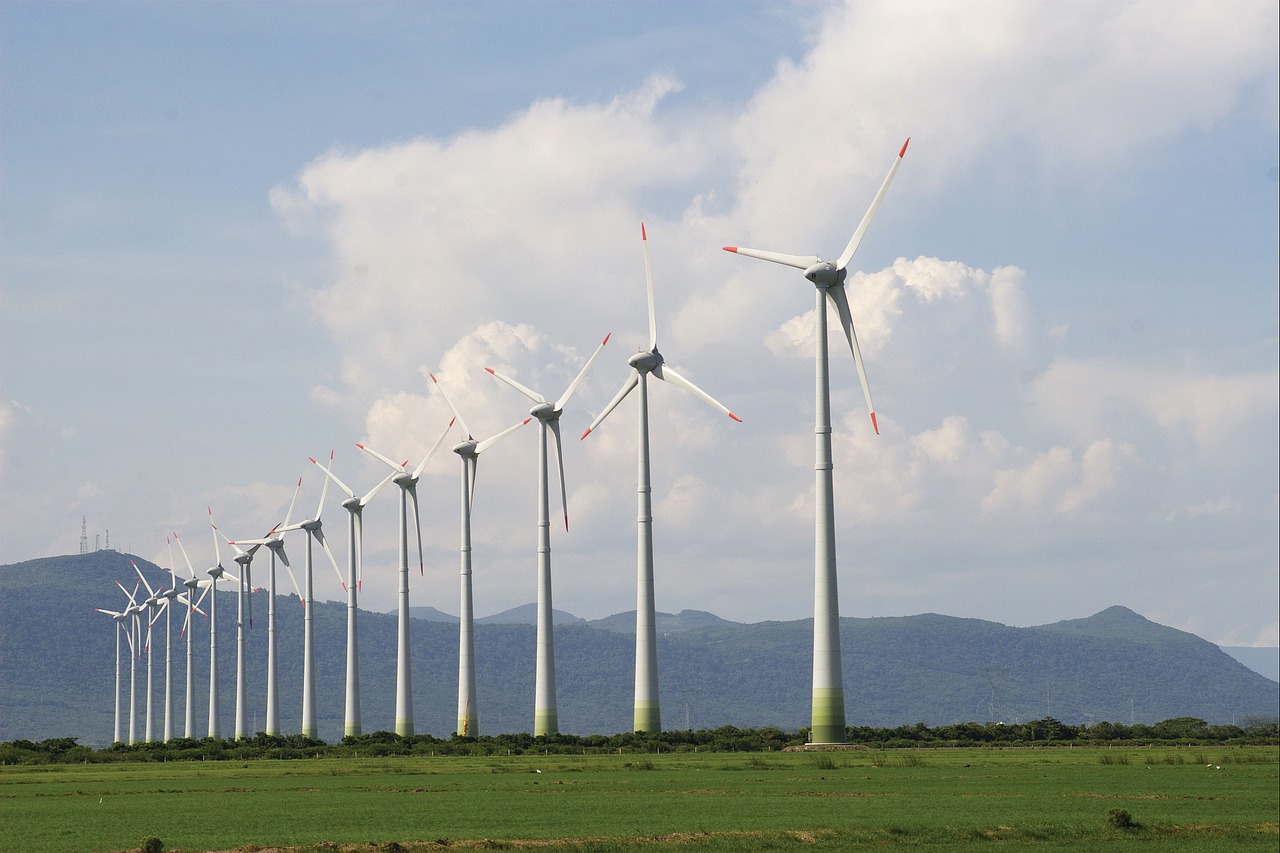
Climate Change Resilience
As we continue to witness the impacts of climate change, the importance of developing resilient energy systems becomes increasingly clear. Freshwater energy solutions, such as hydropower and emerging technologies like wave and tidal energy, offer a unique opportunity to enhance our resilience against climate-related challenges. These systems not only provide renewable energy but also adapt to changing environmental conditions, making them vital in our fight against climate change.
One of the key advantages of freshwater energy systems is their ability to adapt to fluctuating water availability. For instance, during periods of drought, innovative technologies can optimize energy production by utilizing stored water more efficiently. This adaptability helps ensure a consistent energy supply, even in the face of climate variability. Moreover, freshwater energy systems can be designed to be more flexible, allowing for adjustments based on real-time environmental data.
Additionally, integrating freshwater energy solutions with other renewable sources can create a robust energy network. By combining solar, wind, and freshwater energy, communities can diversify their energy portfolios, reducing dependence on any single source and enhancing overall system resilience. This interconnected approach not only stabilizes energy supply but also lowers greenhouse gas emissions, contributing to a more sustainable future.
However, it is essential to consider the potential impacts of climate change on freshwater ecosystems themselves. Changes in precipitation patterns and increased temperatures can affect water quality and availability, posing challenges to energy production. To address these risks, ongoing research and adaptive management strategies are crucial. For example, monitoring water levels and quality can help energy producers make informed decisions that protect both energy production and aquatic ecosystems.
In summary, freshwater energy solutions are not just about generating electricity; they play a pivotal role in building . By investing in these technologies and fostering innovation, we can create a sustainable energy future that not only meets our current needs but also safeguards our environment for generations to come.
- What are freshwater energy solutions? Freshwater energy solutions refer to technologies that harness water resources for energy production, including hydropower, wave energy, and tidal energy.
- How do freshwater energy systems contribute to climate change resilience? These systems can adapt to changing environmental conditions, optimize energy production during droughts, and integrate with other renewable sources to create a stable energy network.
- What challenges do freshwater energy solutions face? Freshwater energy systems must contend with climate variability, potential impacts on aquatic ecosystems, and the need for ongoing research and adaptive management strategies.
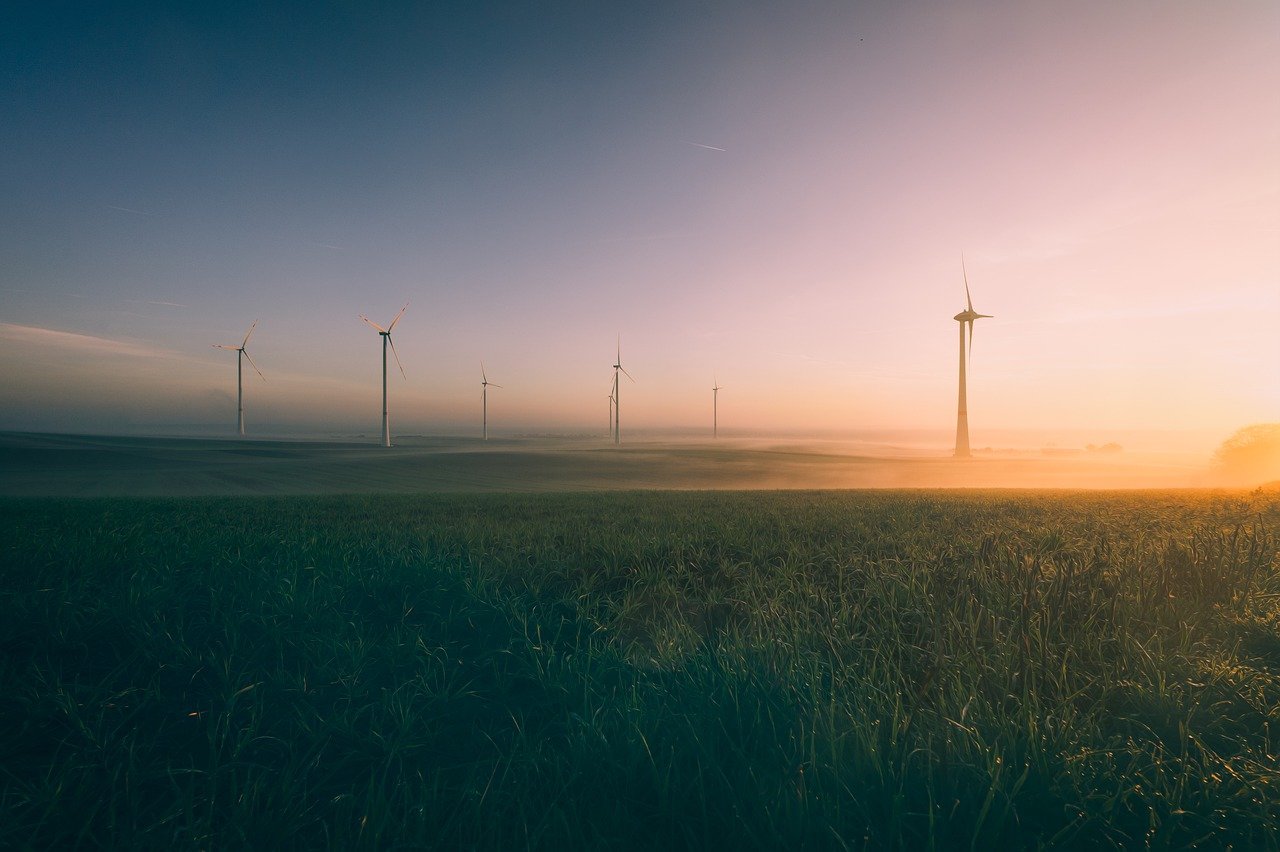
Policy and Regulatory Framework
To truly unlock the potential of freshwater energy solutions, a robust policy and regulatory framework is essential. Without the right regulations in place, innovative technologies may struggle to gain traction, stifling growth in this promising sector. Effective policies can create a supportive environment that encourages investment and fosters innovation. But what does this framework look like?
First off, it’s crucial to understand that policies should not only focus on the technologies themselves but also consider the broader implications for communities and the environment. This means involving local stakeholders in the decision-making process and ensuring that their voices are heard. A collaborative approach can lead to solutions that are both effective and equitable.
In many regions, government incentives play a pivotal role in promoting freshwater energy projects. These incentives can take various forms, including tax credits, grants, and subsidies. By reducing the financial burden on developers, these incentives can make it feasible to invest in new technologies. For instance, a recent study showed that regions offering substantial tax credits saw a 30% increase in freshwater energy projects compared to those without such incentives.
| Type of Incentive | Description | Impact |
|---|---|---|
| Tax Credits | Reductions in taxes owed for investing in freshwater energy projects. | Encourages private investment and lowers project costs. |
| Grants | Direct funding provided to support the development of freshwater energy technologies. | Facilitates research and development, leading to innovation. |
| Subsidies | Financial assistance to lower the price of energy produced from freshwater sources. | Makes renewable energy more competitive against fossil fuels. |
Moreover, international collaboration is crucial for advancing freshwater energy technologies. Countries can learn from each other’s successes and failures, sharing best practices and innovative solutions. For example, partnerships between nations have led to groundbreaking research in tidal energy solutions, demonstrating how collaborative efforts can yield significant advancements.
However, it’s not just about creating incentives and fostering collaboration; there’s also a need for comprehensive regulations that ensure environmental protection and sustainability. Policymakers must balance the need for energy development with the imperative to protect aquatic ecosystems. This means implementing strict environmental impact assessments and monitoring systems to minimize any adverse effects on local habitats.
In conclusion, the policy and regulatory framework surrounding freshwater energy solutions is multifaceted and requires careful consideration. By establishing supportive policies, offering incentives, fostering international collaboration, and prioritizing environmental sustainability, we can pave the way for a cleaner, greener energy future.
- What are freshwater energy solutions? Freshwater energy solutions refer to technologies that harness the power of freshwater resources, such as rivers and lakes, for renewable energy generation.
- How do government incentives help? Government incentives reduce financial barriers for developers, encouraging investment in innovative technologies and projects.
- Why is international collaboration important? International collaboration allows countries to share knowledge, best practices, and technological advancements, accelerating the development of freshwater energy solutions.
- What are the environmental impacts of freshwater energy systems? While these systems provide renewable energy, they can also affect local ecosystems, necessitating careful planning and monitoring to mitigate potential risks.
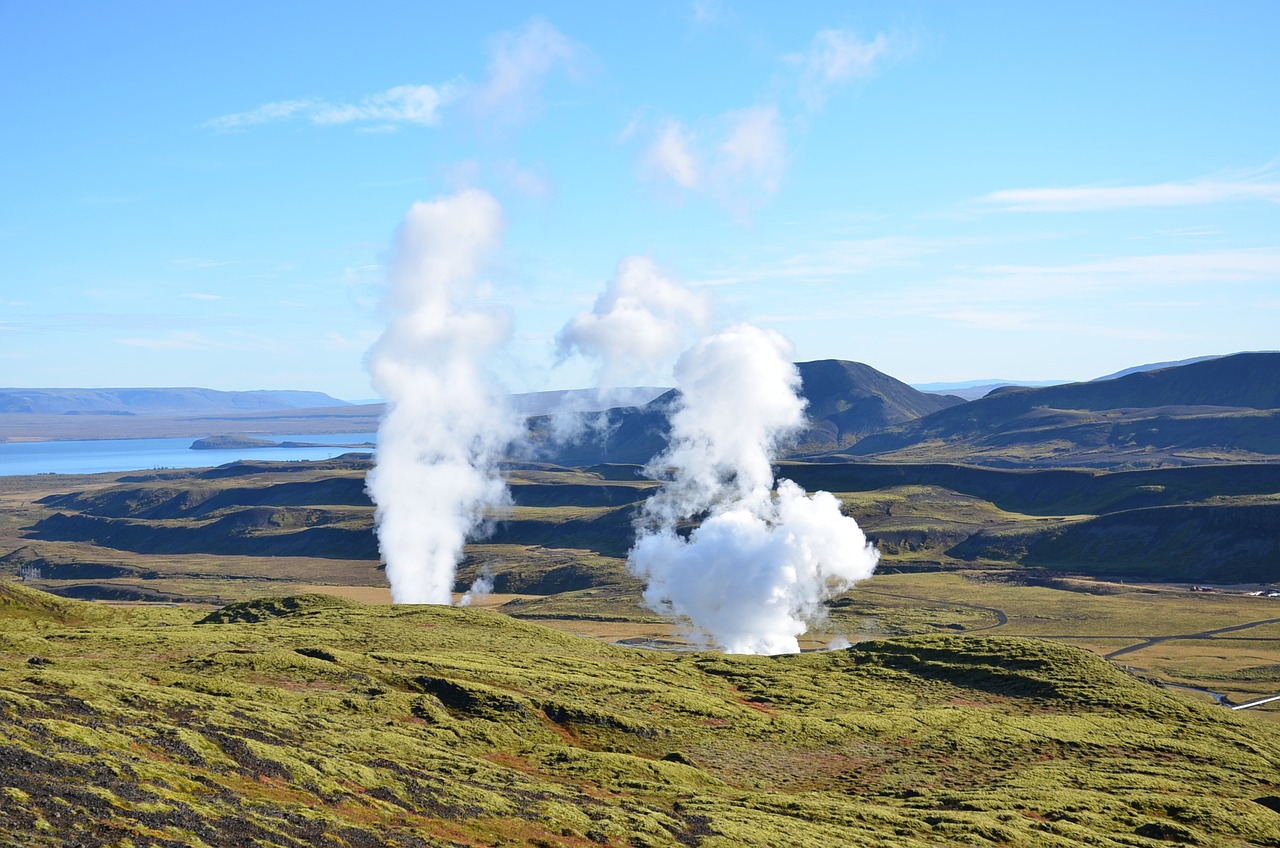
Government Incentives
Government incentives are a crucial driving force behind the growth and adoption of freshwater energy solutions. These incentives can take many forms, from financial grants and tax credits to regulatory support and subsidies. By providing these benefits, governments aim to encourage investment in renewable energy technologies, ultimately fostering a more sustainable energy landscape.
One of the most significant incentives is the provision of tax credits for companies that invest in freshwater energy projects. These credits can significantly reduce the overall cost of installation and operation, making it more appealing for businesses and investors. For instance, the Investment Tax Credit (ITC) allows developers to deduct a substantial percentage of the cost of solar energy systems from their federal taxes, which can also be applicable to certain freshwater technologies.
Additionally, grants are often available to support research and development in the freshwater energy sector. These funds can help innovators explore new technologies, improve existing systems, and develop more efficient methods of harnessing energy from water resources. For example, the U.S. Department of Energy frequently allocates funds to projects focused on innovative hydropower technologies, ensuring that the sector remains competitive and cutting-edge.
Moreover, subsidies for operational costs can help lower the financial burden on companies that implement freshwater energy solutions. By subsidizing costs associated with maintenance, research, and development, governments can stimulate further investment and innovation. This type of support is particularly important for emerging technologies, which may not yet be financially viable without some level of assistance.
It's also essential to highlight the role of regulatory frameworks that promote the growth of freshwater energy. Governments can streamline the permitting process for new projects, making it easier for companies to get started. By reducing bureaucratic hurdles, authorities can create a more favorable environment for investment. Additionally, establishing clear and supportive policies can provide the long-term stability that investors seek, ensuring that their investments are protected over time.
In summary, government incentives play a pivotal role in advancing freshwater energy solutions. By combining financial support with regulatory frameworks, governments can create an ecosystem that encourages innovation, investment, and sustainable energy practices. This, in turn, not only benefits the environment but also fosters economic growth and job creation in the renewable energy sector.
- What are government incentives for renewable energy? Government incentives are financial or regulatory supports provided by governments to encourage the development and adoption of renewable energy technologies.
- How do tax credits work for freshwater energy projects? Tax credits allow companies to reduce their taxable income based on the amount they invest in renewable energy projects, effectively lowering their overall tax burden.
- Can grants be used for research in freshwater energy? Yes, many government agencies offer grants specifically aimed at supporting research and development in the renewable energy sector, including freshwater energy technologies.
- What is the importance of regulatory frameworks for freshwater energy? Regulatory frameworks help streamline processes for project approvals and provide a stable environment for investment, which is crucial for the growth of the sector.
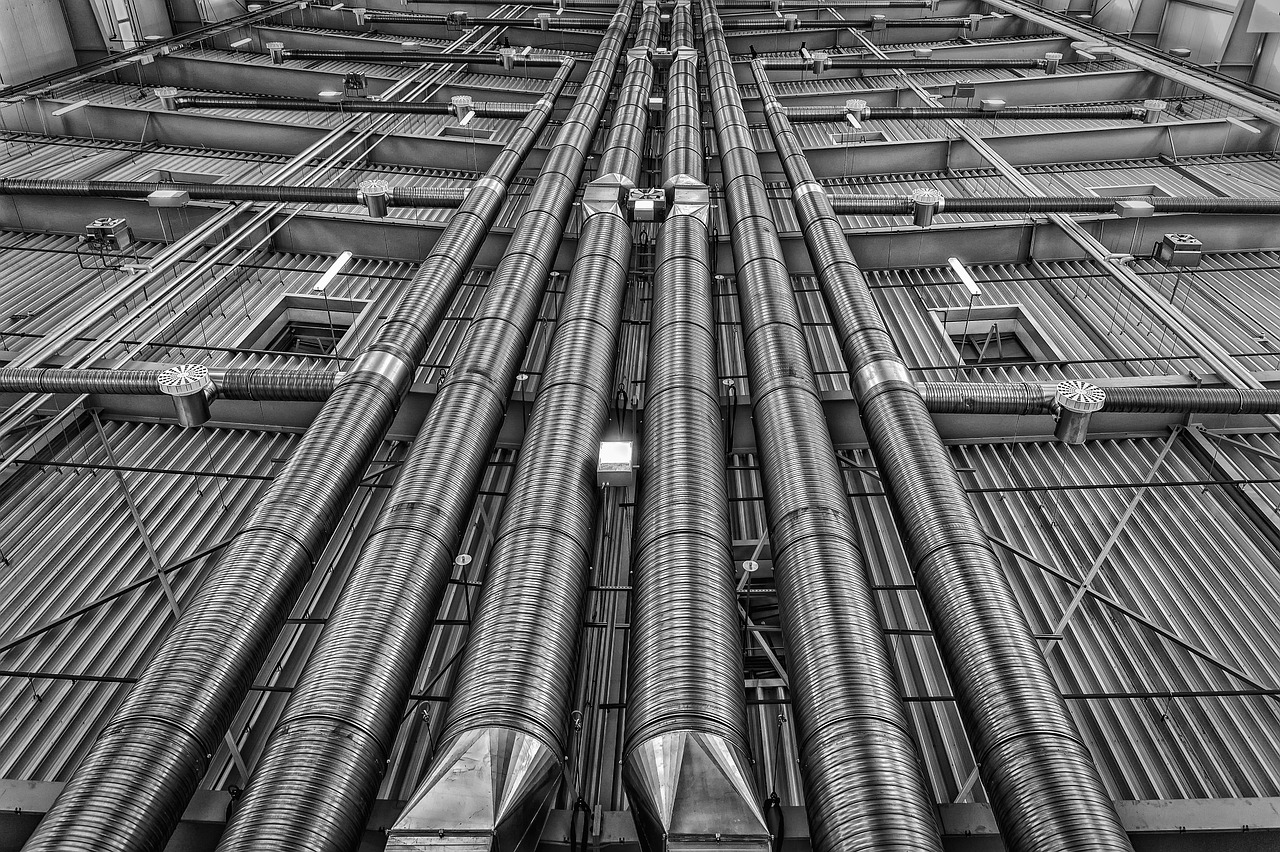
International Collaboration
When it comes to advancing freshwater energy technologies, international collaboration is not just beneficial; it's essential. The global challenges we face, such as climate change, energy security, and environmental degradation, require a united front. By pooling resources, knowledge, and expertise, countries can accelerate the development and deployment of innovative solutions that harness the power of water.
One of the most significant advantages of international collaboration is the sharing of best practices. For instance, countries with advanced hydropower systems can share their operational insights with nations just starting their journey into freshwater energy. This knowledge transfer can lead to faster implementation and fewer mistakes, ultimately saving time and resources. Moreover, collaborative research initiatives can lead to breakthroughs that might not be possible in isolation.
Additionally, international partnerships can facilitate funding opportunities. Many governments and organizations are more willing to invest in projects that demonstrate a collaborative effort, as it reduces risks and enhances the potential for success. Joint ventures can attract investments from multiple sources, including private sectors and international development funds, which can significantly boost the financial viability of freshwater energy projects.
For example, the International Hydropower Association has been instrumental in promoting sustainable hydropower development through collaborative efforts. By bringing together stakeholders from various countries, they foster discussions on best practices, technology advancements, and regulatory frameworks. Their initiatives have not only improved project outcomes but have also enhanced the overall sustainability of freshwater energy solutions.
However, international collaboration does come with its challenges. Differences in regulatory frameworks, political climates, and economic conditions can create hurdles. To overcome these, it is crucial to establish clear communication channels and mutual agreements that respect each country's unique context while working towards a common goal.
In conclusion, the future of freshwater energy solutions hinges on our ability to work together across borders. By fostering international collaboration, we can unlock the full potential of freshwater resources, paving the way for a more sustainable and resilient energy future.
- What is freshwater energy? Freshwater energy refers to the various technologies that utilize freshwater resources, such as rivers and lakes, for power generation.
- Why is international collaboration important in freshwater energy? It allows for the sharing of knowledge, resources, and funding, which can accelerate the development and implementation of effective energy solutions.
- What are some examples of international partnerships in freshwater energy? Organizations like the International Hydropower Association facilitate collaboration among countries to promote sustainable hydropower practices.
- What challenges do international collaborations face? Differences in regulations, political climates, and economic conditions can create obstacles that need to be managed through clear communication and mutual agreements.

Future Prospects and Innovations
The future of freshwater energy solutions is not just a flicker on the horizon; it’s a blazing trail leading us toward sustainable energy practices. As we stand on the brink of a new era in energy generation, innovations are emerging that promise to revolutionize how we harness the power of water. Imagine a world where our rivers and lakes are not just beautiful landscapes but also vital contributors to our energy needs. This vision is becoming more attainable as research and development in freshwater energy technologies gain momentum.
One of the most exciting prospects lies in the integration of freshwater energy systems with smart grids. These advanced grids utilize digital technology to manage electricity flow more efficiently, allowing for real-time adjustments based on supply and demand. By incorporating freshwater energy sources, such as hydropower and wave energy, smart grids can optimize energy distribution, reduce waste, and enhance grid reliability. This integration is crucial, especially as we face increasing energy demands and the need for cleaner alternatives.
Furthermore, ongoing innovations in energy storage solutions are set to change the game. For instance, advancements in battery technologies can provide the necessary support for intermittent energy sources like wave and tidal energy. Imagine a scenario where excess energy generated during peak production times is stored and then released during periods of high demand. This not only stabilizes the grid but also ensures that renewable energy sources are utilized to their fullest potential.
In addition to technological advancements, raising public awareness and education about freshwater energy is essential. The more people understand the benefits and possibilities of these technologies, the more likely they are to support their implementation. Educational programs and community outreach initiatives can play a significant role in fostering a culture of sustainability, encouraging individuals and businesses to invest in freshwater energy solutions.
As we look to the future, it’s also important to consider the role of policy and regulatory frameworks in fostering innovation. Governments around the world must create supportive environments that encourage investment in freshwater energy projects. This includes not only financial incentives but also streamlined regulations that make it easier for companies to develop and deploy new technologies. The collaboration between public and private sectors can lead to groundbreaking advancements that push the boundaries of what’s possible in freshwater energy generation.
In summary, the future of freshwater energy solutions is filled with promise and potential. By embracing innovation, integrating with smart technologies, and fostering public understanding, we can unlock the untapped potential of our freshwater resources. The journey toward sustainable energy is not just about meeting today's needs; it's about paving the way for a greener, cleaner future for generations to come.
- What are freshwater energy solutions? Freshwater energy solutions refer to technologies that harness the power of water resources, such as rivers and lakes, to generate electricity sustainably.
- How do smart grids enhance freshwater energy systems? Smart grids optimize energy distribution by managing electricity flow in real-time, allowing better integration of renewable energy sources like hydropower and wave energy.
- What role does public awareness play in the adoption of freshwater energy? Increased public awareness fosters community support and understanding, which is vital for the successful implementation of freshwater energy technologies.
- What are some emerging technologies in freshwater energy? Emerging technologies include wave energy conversion, tidal energy solutions, and advancements in energy storage, which all contribute to more efficient energy generation.

Integration with Smart Grids
Integrating freshwater energy systems with smart grids is like giving them a brain—suddenly, they can think, adapt, and respond to real-time demands. Smart grids utilize advanced technology to monitor and manage energy flows, ensuring that power generation and consumption are in sync. This integration is crucial for maximizing the efficiency of freshwater energy sources, such as hydropower and emerging technologies like wave and tidal energy.
One of the most exciting aspects of this integration is the ability to harness data analytics and automation. Imagine a system that can predict energy demand based on weather forecasts, local events, or even traffic patterns. By using predictive analytics, smart grids can optimize the distribution of energy generated from freshwater sources, ensuring that power is available when and where it is needed most.
Moreover, the integration of freshwater energy systems with smart grids enhances grid resilience. In the face of natural disasters or unexpected outages, a smart grid can quickly reroute energy from various sources, including freshwater systems, to maintain a steady supply. This flexibility is essential for adapting to the fluctuations in energy production that can occur with renewable sources, particularly those reliant on water flow and weather conditions.
However, the journey toward full integration is not without its challenges. Upgrading existing infrastructure to accommodate smart technologies can be a costly endeavor. It requires not only financial investment but also collaboration among various stakeholders, including government agencies, energy providers, and technology developers. To facilitate this transition, government incentives and supportive policies are essential, encouraging investment in both smart grid technology and freshwater energy projects.
In conclusion, the integration of freshwater energy systems with smart grids represents a significant leap toward a sustainable energy future. By leveraging cutting-edge technology and data-driven insights, we can optimize energy production and consumption, paving the way for a cleaner, more resilient energy landscape.
- What are smart grids? Smart grids are electricity supply networks that use digital communication technology to detect and react to local changes in usage.
- How do freshwater energy systems work? Freshwater energy systems harness the power of water resources, such as rivers and lakes, to generate electricity through various technologies, including hydropower.
- What are the benefits of integrating freshwater energy with smart grids? This integration enhances efficiency, reliability, and resilience by optimizing energy production and consumption in real-time.
- What challenges do we face in integrating these systems? Challenges include the need for infrastructure upgrades, financial investments, and collaboration among stakeholders.

Public Awareness and Education
Raising public awareness about freshwater energy solutions is not just a nice-to-have; it's a necessity for fostering a sustainable future. Imagine a world where communities actively engage with their energy sources, understanding how they can contribute to both local and global environmental goals. This isn’t just about technology; it’s about people. By educating the public on the benefits and workings of freshwater energy, we can encourage more individuals to support and adopt these innovative solutions.
Education initiatives can take many forms, from community workshops to school programs, all aimed at demystifying the technology behind freshwater energy. When people understand how these systems work, they are more likely to advocate for them. For instance, local governments can collaborate with educational institutions to develop curriculum that highlights the importance of renewable energy, particularly focusing on the unique aspects of freshwater resources. This can create a generation of informed citizens who are passionate about sustainability.
Moreover, public awareness campaigns can leverage various platforms to reach a wider audience. Social media, local news outlets, and community events can serve as effective channels for disseminating information. Here are some key points that can be highlighted in these campaigns:
- Benefits of Freshwater Energy: Emphasizing its role in reducing carbon footprints and promoting energy independence.
- Environmental Impact: Discussing how freshwater energy solutions can protect aquatic ecosystems and biodiversity.
- Community Involvement: Encouraging local communities to participate in discussions and decision-making processes regarding energy projects.
Furthermore, partnerships with local businesses can enhance the reach of educational initiatives. For example, a local café could host informational sessions or provide discounts for customers who attend workshops about freshwater energy. This not only promotes the café but also fosters a sense of community around sustainability efforts.
Ultimately, the goal of public awareness and education is to create a culture where sustainable energy practices are not just accepted but celebrated. By turning knowledge into action, communities can become advocates for change, driving the adoption of freshwater energy solutions and ensuring a cleaner, greener future for all.
| Question | Answer |
|---|---|
| What are freshwater energy solutions? | Freshwater energy solutions refer to various technologies that harness the power of freshwater resources for energy generation, including hydropower, wave energy, and tidal energy. |
| How can I get involved in promoting freshwater energy? | You can participate in local workshops, support community initiatives, and advocate for policies that promote sustainable energy practices. |
| What are the environmental benefits of freshwater energy? | Freshwater energy solutions can reduce greenhouse gas emissions, preserve aquatic ecosystems, and contribute to sustainable resource management. |
| Are there any risks associated with freshwater energy? | Yes, while freshwater energy has many benefits, it can also impact local ecosystems if not managed properly. It's essential to implement mitigation strategies to protect biodiversity. |
Frequently Asked Questions
- What are freshwater energy solutions?
Freshwater energy solutions refer to various technologies that harness the power of freshwater resources, such as rivers and lakes, to generate electricity. These solutions include hydropower, wave energy, and tidal energy, all of which aim to provide sustainable energy while minimizing environmental impact.
- How does hydropower work?
Hydropower generates electricity by using the flow of water to turn turbines. In traditional systems, large dams are built to create a reservoir, while run-of-river systems utilize the natural flow of rivers without significant alteration. This method is less invasive and helps maintain local ecosystems.
- What are the benefits of run-of-river systems?
Run-of-river systems offer several advantages, including reduced ecological disruption, preservation of river habitats, and lower construction costs compared to traditional dams. They also provide a sustainable energy source while maintaining natural river flow, which is essential for aquatic life.
- What challenges do freshwater energy solutions face?
Freshwater energy solutions encounter challenges such as seasonal flow variability, environmental impacts on aquatic ecosystems, and the need for substantial initial investments. Addressing these challenges is crucial for maximizing their potential and ensuring long-term sustainability.
- How do emerging technologies improve freshwater energy?
Emerging technologies, like wave energy conversion and tidal energy solutions, are enhancing the efficiency and reliability of freshwater energy generation. These innovations allow for better integration with existing energy systems and provide new avenues for harnessing renewable energy sources.
- What role does policy play in the development of freshwater energy?
Effective policies and regulations are vital for promoting freshwater energy projects. Government incentives, such as tax breaks and grants, can encourage investment in these technologies, while international collaboration fosters knowledge sharing and innovation across borders.
- How can freshwater energy solutions contribute to climate change resilience?
Freshwater energy solutions can enhance resilience against climate change by providing a stable and sustainable energy source. By diversifying energy production methods and reducing reliance on fossil fuels, these technologies help communities adapt to changing environmental conditions.
- What is the future of freshwater energy solutions?
The future looks bright for freshwater energy solutions, with ongoing research and advancements in technology. Innovations such as smart grid integration and increased public awareness are expected to drive the adoption of these sustainable energy sources, reshaping the energy landscape for generations to come.



















